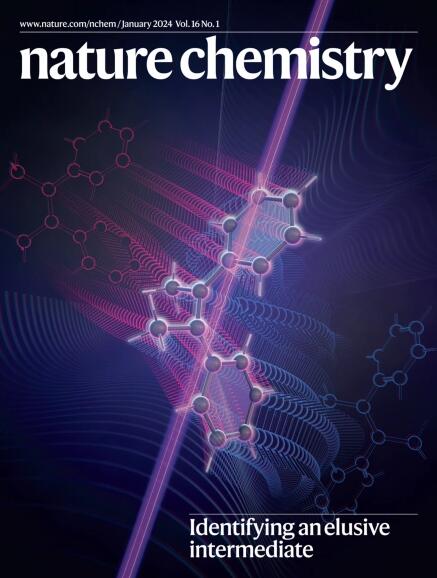Protocells by spontaneous reaction of cysteine with short-chain thioesters
IF 19.2
1区 化学
Q1 CHEMISTRY, MULTIDISCIPLINARY
引用次数: 0
Abstract
All known forms of life are composed of cells, whose boundaries are defined by lipid membranes that separate and protect cell contents from the environment. It is unknown how the earliest forms of life were compartmentalized. Several models have suggested a role for single-chain lipids such as fatty acids, but the membranes formed are often unstable, particularly when made from shorter alkyl chains (≤C8) that were probably more prevalent on prebiotic Earth. Here we show that the amino acid cysteine can spontaneously react with two short-chain (C8) thioesters to form diacyl lipids, generating protocell-like membrane vesicles. The three-component reaction takes place rapidly in water using low concentrations of reactants. Silica can catalyse the formation of protocells through a simple electrostatic mechanism. Several simple aminothiols react to form diacyl lipids, including short peptides. The protocells formed are compatible with functional ribozymes, suggesting that coupling of multiple short-chain precursors may have provided membrane building blocks during the early evolution of cells. It is unknown what lipids formed the membranes of early life forms. Now it has been shown that protocell vesicles can assemble from diacylcysteines, which form spontaneously from cysteine and short-chain thioesters. Silica catalyses membrane formation, and protocells formed from diacylcysteine lipids are compatible with ribozyme activity.


半胱氨酸与短链硫酯的自发反应产生原电池
所有已知的生命形式都是由细胞组成的,细胞的边界由脂质膜界定,脂质膜将细胞内容物与环境隔开并提供保护。目前还不清楚最早的生命形式是如何分隔的。有几种模型认为脂肪酸等单链脂质发挥了作用,但形成的膜往往不稳定,尤其是由较短的烷基链(≤C8)制成的膜,而这种烷基链在前生物地球上可能更为普遍。在这里,我们展示了氨基酸半胱氨酸能自发地与两个短链(C8)硫代酯发生反应,形成二酰脂类,生成类似原细胞的膜泡。这种由三部分组成的反应在水中以低浓度反应物迅速发生。二氧化硅可通过简单的静电机制催化原胞的形成。几种简单的氨基硫醇会发生反应,形成二酰脂类,包括短肽。形成的原细胞与功能性核糖酶兼容,这表明在细胞早期进化过程中,多种短链前体的耦合可能提供了膜构件。
本文章由计算机程序翻译,如有差异,请以英文原文为准。
求助全文
约1分钟内获得全文
求助全文
来源期刊

Nature chemistry
化学-化学综合
CiteScore
29.60
自引率
1.40%
发文量
226
审稿时长
1.7 months
期刊介绍:
Nature Chemistry is a monthly journal that publishes groundbreaking and significant research in all areas of chemistry. It covers traditional subjects such as analytical, inorganic, organic, and physical chemistry, as well as a wide range of other topics including catalysis, computational and theoretical chemistry, and environmental chemistry.
The journal also features interdisciplinary research at the interface of chemistry with biology, materials science, nanotechnology, and physics. Manuscripts detailing such multidisciplinary work are encouraged, as long as the central theme pertains to chemistry.
Aside from primary research, Nature Chemistry publishes review articles, news and views, research highlights from other journals, commentaries, book reviews, correspondence, and analysis of the broader chemical landscape. It also addresses crucial issues related to education, funding, policy, intellectual property, and the societal impact of chemistry.
Nature Chemistry is dedicated to ensuring the highest standards of original research through a fair and rigorous review process. It offers authors maximum visibility for their papers, access to a broad readership, exceptional copy editing and production standards, rapid publication, and independence from academic societies and other vested interests.
Overall, Nature Chemistry aims to be the authoritative voice of the global chemical community.
 求助内容:
求助内容: 应助结果提醒方式:
应助结果提醒方式:


